The joke was on our parents, really.
They fretted endlessly about the kinds of friends we were hanging out with. Were they future hoodlums? Were they destined to become upstanding members of the community?
But while Mom and Dad were scrutinizing our flesh-and-blood buddies, they never dreamed of checking out our cathode ray pals — the ghouls and gravediggers who slunk across our flickering black-and-white TV screens late Saturday nights, long after our parents had gone off to blissful dreams.
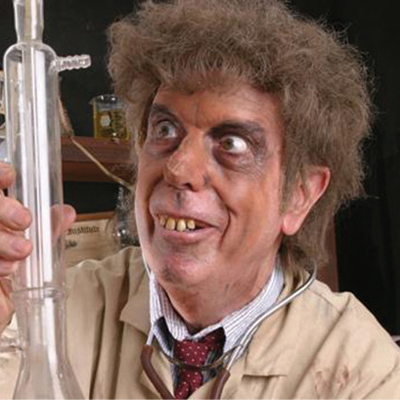
It was then, the weekend witching hour, when local TV stations from coast to coast unleashed their late-night horror hosts. Most of them were men; virtually all of them lurked in minimalist TV studio dungeons, cackling and rumbling mordant introductions to well-worn horror movies like The Crawling Eye and The Thing with Two Heads.
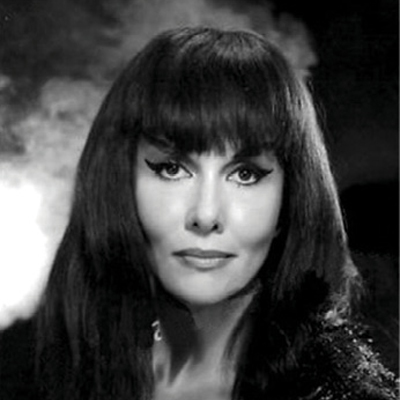
If you lived in Indianapolis in the 1960s, ’70s, or ’80s, your parents would have been aghast at Sammy Terry (shown above), a ghoul with the face of Death from The Seventh Seal and a voice that invoked Vincent Price with a touch of Liberace. Parents in New Orleans would have shaken their heads sadly at the bizarre laboratory experiments of Morgus the Magnificent — a psycho mix of Mr. Wizard and Dr. Frankenstein — whose “lectures” bookended vintage horror flicks. And they most certainly would not have approved of the sexy scares offered by San Diego’s Moona Lisa, who lounged about in a slinky cat suit and often had a live python draped around her neck. “Hello, earthlings!” was her weekly greeting. At sign-off, she sent her audience of 10-year-old boys off to bed by purring, “Happy hallucinations, honeys.”
Then again, if you lived in Pittsburgh, Pennsylvania, your parents would have been more than comfortable with Chilly Billy Cardille, a guy in a suit and tie who would have seemed more at home hosting Queen for a Day with Jack Bailey than The Black Cat with Bela Lugosi and Boris Karloff. Suave and self-assured, he liked to refer to himself as “Mr. Magnificent.”
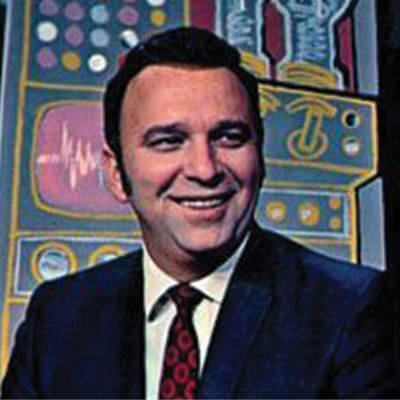
It may surprise you to learn there is an actual Horror Host Hall of Fame, administered by HorrorHound Magazine. I was disappointed to discover there’s no actual physical hall, which would of course be cool as all get-out, but the group holds an induction ceremony each summer. Since 2011, the HHHOF has honored more than 110 hosts ranging from the 1950s to the present day.
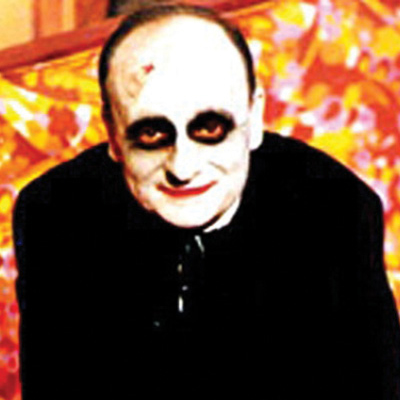
Only two members of the HHHOF’s charter class of inductees survive: Bill “Bowman Body” Bowman, a 1970s Richmond, Virginia, stalwart — still beloved by thousands decades after his retirement — and Count Gore de Vol, who first popped out of his upright coffin on Washington, D.C., television in 1973. There’s good reason to suspect that Dick Dyszel, who played the Count, is, like his vampirish creation, touched by immortality: Nearly 50 years later, he’s still at it, vamping and camping it up for yet another generation of horror film lovers.
“The horror host is a lot like Robert Osborne [former host of Turner Classic Movies],” Dyszel tells me. “Only he’s wearing a lot more makeup.”
In a field dominated by males, it is significant that HHHOF inductee No. 1 is a woman whose body of work has been all but lost. Vampira, a character created by an actress named Maila Nurmi, burst onto late-night Los Angeles television in 1954, slinking toward the camera in a skin-tight Morticia Addams gown and vamping with a come-hither-and-die gaze.
Only a few kinescope snippets of Vampira’s show on KABC survive, but it’s clear Nurmi set the template for all horror hosts to follow. Most notably, she mercilessly mocked the dead-serious, schlocky films she introduced, throwing in corny gallows humor (such as inviting fans to write in for her “epitaph”). Lounging seductively on a skull-encrusted daybed, puffing sensuously on a cigarette, Vampira was clearly not the kind of girl you took home to mother — unless mother happened to be the Bride of Frankenstein.
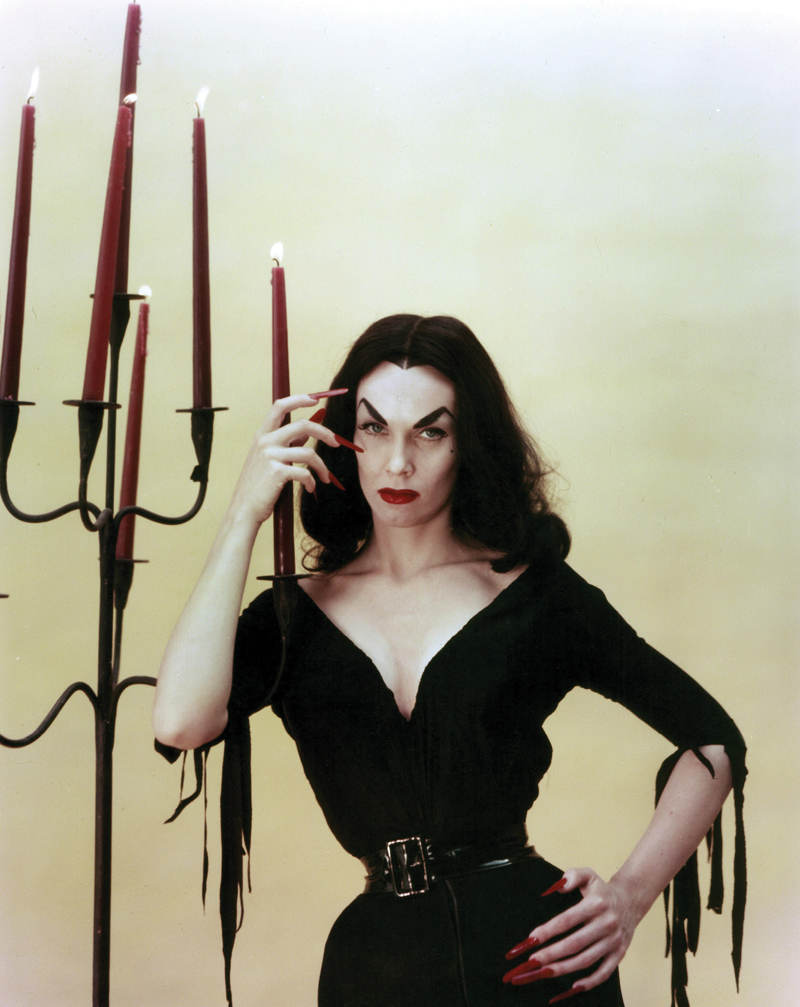
I was lucky enough to grow up near New York City under the tutelage of the HHHOF’s No. 2 inductee: John Zacherle, the man recognized as the Michelangelo of monster movie hosts. In most cities, late-night hosts were transplanted from another station position — more than one doubled as Bozo the Clown during the day, and San Diego’s cat lady was also a local newscaster. But Zacherle was seemingly born to play the part of the guy he liked to call “The Cool Ghoul.” An actor from the get-go in Philadelphia television, he incrementally honed his character into a skull-faced, smooth-talking man about town. By the time he got to New York in the late 1950s, Zacherle had mastered the intimacy of TV, going about his dungeonly chores and muttered conversations with such nonchalance he’d occasionally glance up at the camera and register surprise, as if to ask, “What are you still doing here?”
My parents were vaguely aware of Zacherle. My dad even bought me one of his records (Dinner with Drac). But I’m not sure they were aware that his TV sidekick was his wife, known only as “My Dear” — and never seen, because she “lived” in an open coffin.
For all its impact, Vampira’s show lasted only a season, partly because there were at the time not many horror movies available for TV. That all changed in October 1957, when many of Universal Studios’ horror classics became available for the first time. But TV stations balked at the film package, branded the “Shock!” collection, because most of the old films, created as B movies, were far too short to fill even a 90-minute time slot (The Black Cat, for my money the scariest movie ever made, clocks in at barely an hour).
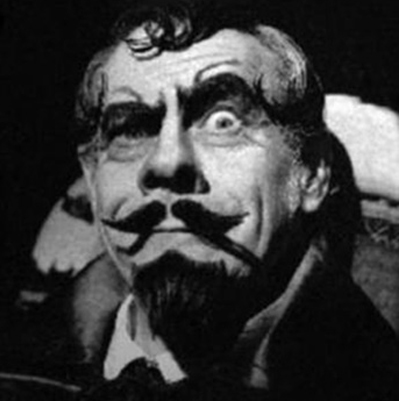
But the geniuses in Hollywood had a solution: Fill in all that air time with a local horror movie host. Almost overnight, regional “Shock!” hosts were born, a rogues gallery that, along with Zacherle and Sammy Terry, included such scary personages as Gorgon (Fort Worth), Tarantula Ghoul (Portland, Oregon), and Marvin (Chicago).
Business was good, and other movie distributors took notice. “Creature Features,” a 1960s syndicated package, included horror movies from some of Hollywood’s lesser-known studios, most of them so awful they were good — especially for their TV hosts, who found imaginative ways to lampoon them around commercial breaks. Still considered part of the First Wave of horror hosts, this group included Pittsburgh’s “Chilly Billy” Cardille and Indianapolis’s Sammy Terry, plus the likes of Cleveland’s Ghoulardi, Detroit’s Sir Graves Ghastly, the Vegas Vampire, and San Francisco’s Bob Wilkins — an amiable, soft-spoken fellow who dressed in V-neck sweaters, puffed a cigar, and gently pushed back and forth in a rocking chair while professorially extolling the virtues of potboilers like Creature from the Black Lagoon.
There was, however, a creeping horror on the horizon: As the ’60s rolled on, studios began to syndicate old TV shows, providing a lower-cost programming option for local stations. By the time the decade was out, simple economics had all but driven a stake through the heart of the TV horror host.
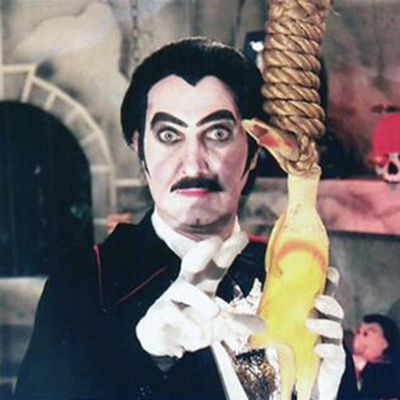
Count Gore de Vol, né Dick Dyszel, is speaking to me from an undisclosed location in Florida, where the Count still maintains a basement studio “dungeon” for his weekly internet horror movie show. In horror host circles, Dyszel is a living legend. The longest-tenured host of all time, he is approaching a half-century in the Count’s pasted-down hairdo and flowing black cape.
“I was part of the second wave of horror hosts,” he tells me.
While the well-established VHF TV stations — channels 2 through 13 — had virtually done away with live hosts, the nation’s new UHF stations were struggling to come up with enough material to fill their broadcast days.
“I’m not kidding,” says Dyszel. “They were running bullfighting from Mexico.”
That provided a new opportunity for live hosts. On February 3, 1973, Dyszel’s Count Gore appeared for the first time on UHF Channel 20 in Washington, D.C.
“I’d already been playing Bozo and another character, called Captain 20, but I went to the program director and said, ‘You know, I’m doing all this kid stuff; I need a show where I can be a grown-up and talk dirty to adults at night.”
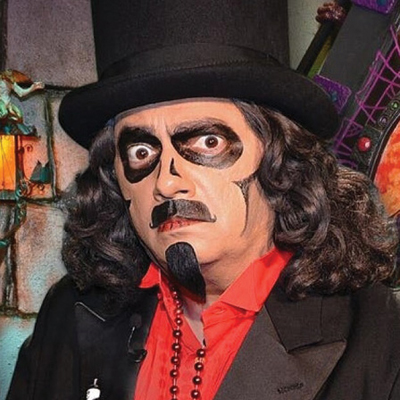
Within the parameters of 1970s local broadcast TV, that could have meant only one thing: A late-night horror hosting gig. What Dyszel calls “the UHF class of horror hosts” thrived through the 1970s and well into the 1990s. Kids fiddling with the upper reaches of the UHF dial discovered bad horror movies and over-the-top emcees like Kansas City’s Crematia Mortem (“The Ghostess with the Mostest”) — and, in Chicago, a top-hatted, dark-eyed coffin dweller named Svengoolie.
Broadcasting on the most powerful UHF station in the country and benefiting from wide cable TV coverage, Count Gore was seen in homes as far away as Georgia. But the same fate that all but eliminated VHF hosts awaited their UHF brethren: Cheap syndicated programming became available, pushing in-house hosts into the cold night of unemployment. Even the venerable Count Gore was canceled in 1987. It seemed like, for the most part, horror hosts would at last crumble to dust, like Dracula admiring a sunrise.
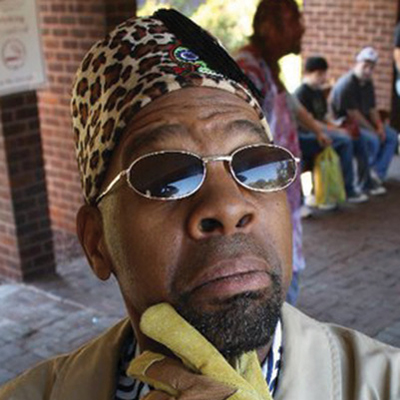
But then came the Third Wave, on public access TV. So long as a show’s “stars” were willing to pick up production costs, local cable networks were more than happy to give them air time. And so, armed with greasepaint, fake cobwebs, and a library of public domain movies, a new breed of horror hosts was born, including Washington, D.C.’s Dr. Sarcofiguy — TV’s first (and, it appears, still only) African-American horror host — and Tennessee public access television legend Dr. Gangrene, still at it after more than 20 years.
Following his cancellation, Dyszel kept his Count Gore character burnished with a steady schedule of personal appearances — horror hosts have a way of inscribing themselves on the hearts of their fans. Then, in 1998, he read up on this thing called the internet — and saw an opportunity to begin the Fourth Wave of horror hosts.
“On July 11, 1998, I became the first horror host of the internet at CountGore.com,” he says. “And I’ve been putting up a new show every Saturday night since then.”
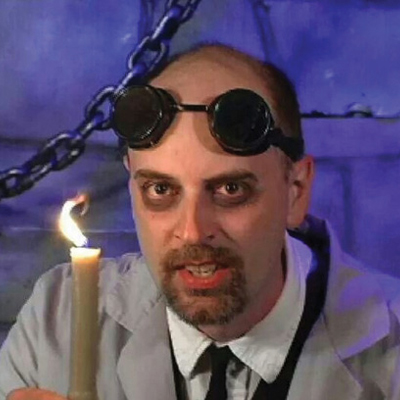
These days, two figures stand astride the world of horror hosts: Vampira-like Elvira, Mistress of the Dark, and Chicago’s Svengoolie. After a phenomenal five-year syndicated run in the 1980s, Elvira’s creator, actress Cassandra Peterson, has made a career of insinuating her character into various media, including books, movies, and computer and pinball games.
On the other hand, Svengoolie, played on Chicago TV since 1979 by Rich Koz, has been sticking to the basics for generations, emerging from his casket every week, performing silly skits, telling corny jokes, and occasionally interrupting the films he hosts to make snarky comments. With his ever-present top hat, dark-circled eyes, and Mitch Miller-like goatee, he was already as much a Chicago icon as deep-dish pizza when, a few years ago, his show was taken national on the MeTV cable network. Now airing earlier in the evening on Saturdays, Svengoolie is seen in 90 percent of the country, making him arguably the most-watched horror host of all time.
“Let’s face it, people have seen a lot of these movies a lot of times,” he says. “In fact, I’m sure there’s a nostalgia element, with people remembering those old horror hosts from long ago.
“But I think there might also be something else. The horror host has always been the safety valve. If a movie gets too tense or too scary, here’s this guy to lighten the mood.”
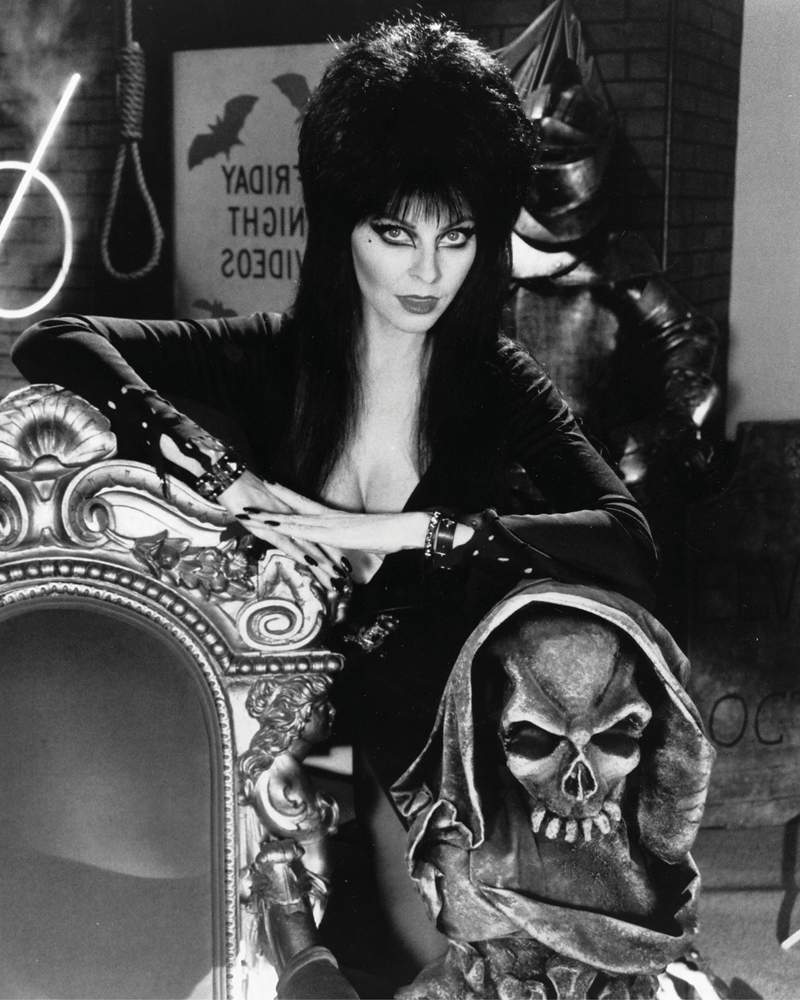
True, the main diet for TV horror movie fans is a steady procession of giant claws, crawling hands, and fainting damsels. But Koz insists on including genuinely scary, masterfully made classics in his repertoire. “I’m happy to have those classics, the ones I grew up loving,” he says. “And frankly, a lot of people are seeing them for the first time on our show because broadcast TV hasn’t had them for decades.
“Of course, the grade-B movies have a lot you can make fun of. That makes them easier to host.”
In some ways, adds Dyszel, a horror host is something like a life coach.
“If a horror movie is a roller coaster,” he says, “the horror host is the guy who sits in the car next to you and tells you you’re going to be okay. But not until it’s all over.”
Award-winning film critic and writer Bill Newcott has been covering Hollywood for more than 40 years. He is the creator of AARP’s Movies For Grownups franchise and is the movie critic for The Saturday Evening Post.
This article appears in the September/October 2022 issue of The Saturday Evening Post. Subscribe to the magazine for more art, inspiring stories, fiction, humor, and features from our archives.
Become a Saturday Evening Post member and enjoy unlimited access. Subscribe now
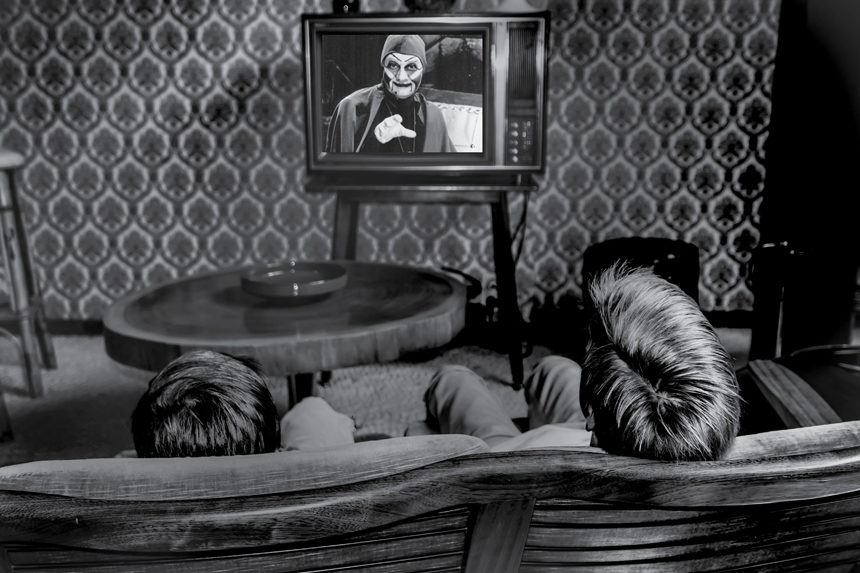

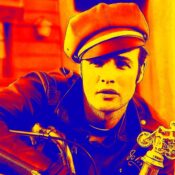
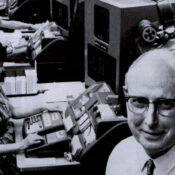
Comments
Seattle had “The Count” played by Joe Towey who also produced the J.P. Patches show. I saw him and J.P. at a costume party in Seattle in the early 80’s. I also grew up watching him every Friday night.
“Nightmare Theatre” was a hosted horror movie show with Joe Towey as “The Count” screening double features on Fridays at 11:30 pm (1968-1975) and single features on Saturdays at 5:00 – 7:00 pm during 1978.
One overlooked host that was not mentioned but very popular in the SE TN, NW GA, and NW AL areas was Dr. Shock and his puppet sidekick Dingbat. Shock Theatre aired over WTVC-TV Channel 9 out of Chattanooga on late Sat nights beginning in the early/mid 1970s and ending in the early 1980s. The classics (Frankenstein, Wolf Man, Dracula, Creature) movies were shown as well as some very obscure B-movies. A local controversy happened one weekend when the movie that was being shown was not properly screened/vetted or edited before showing and several scenes in the movie featured naked “native” girls dancing around. I remember that being the talk of the school I attended the following Mon. Hey! What can I say other than we were a bunch of h0rny pre-teen males and savored every minute of it.
In Wichita through the 60s we had Tom Lahey and various folk as “The Host and Rodney” on KSN. Sort of a snooty-ghoulish type (sounding a little like Thurston Howell) and his Igor-like assistant who responded with grunts. Basically a comedy team. They were revived on cable in the mid-to-late 80s. And San Francisco’s Ch. 20 had the erudite, cigar-smoking “Asmodeus,” garbed in suit and tie. Only on for a few years there are barely any video clips.
Lots of great history here on these horror film tv hosts. Many were region specific in a given state, like Zacherle and Dr. Shock in eastern PA as mentioned. Such was also the case of L.A.’s Larry Vincent who went by ‘Seymour’. He was very popular on local TV stations like KTLA (5) and KHJ (9) in the early 1970’s.
Looking like John Carradine meets Dracula meets Groucho, he had his own shtick that was very entertaining, like popping into a film scene via a corner box questioning what was going on, which Elvira that followed him did as well. Larry was an accomplished actor with appearances on Star Trek, Mannix and more, but being Seymour really put him on the map in one of the country’s most important markets.
Greater success and exposure more in line with Elvira’s was on the brink of happening when he was taken too soon at just 50 from cancer in 1975. There’s an excellent, entertaining podcast video on Larry I think anyone interested in this topic will want to see on You Tube.
It’s ‘Retro Time Machine: Larry Vincent ‘Seymour’ from November 2021 featuring his two charming daughters along with the host that’s a look at the man from a perspective only they would have, wanting to share their father’s contributions, keep his legacy alive, and ponder some likely scenarios if he’d lived longer. Fun ‘Seymour’ nostalgia and memorabilia as well.
Zacherle is indeed covered. There’s two paragraphs about him. Here in eastern PA we also had Dr. Shock as well as Zacherle.
How could you exclude Zacharly?